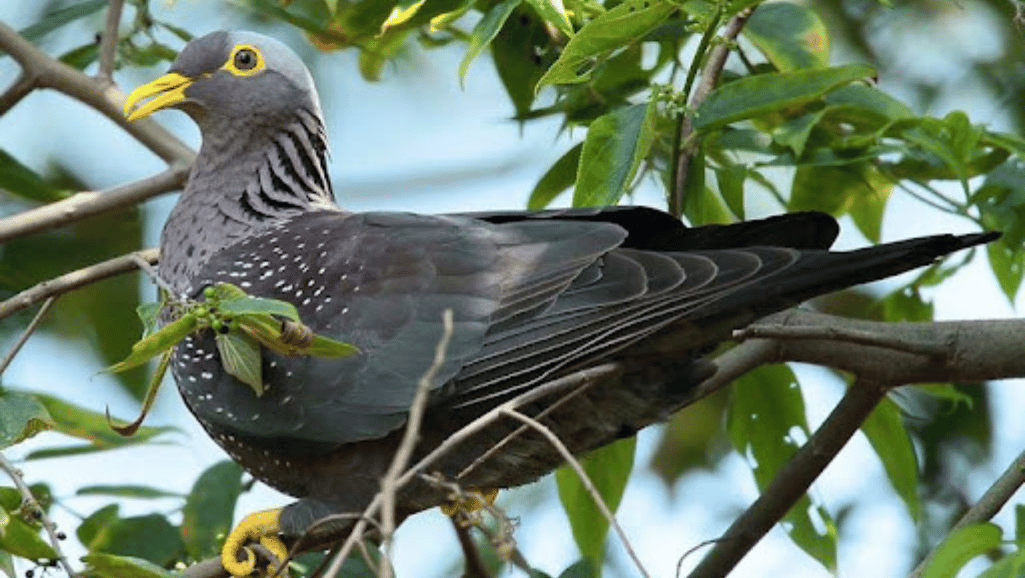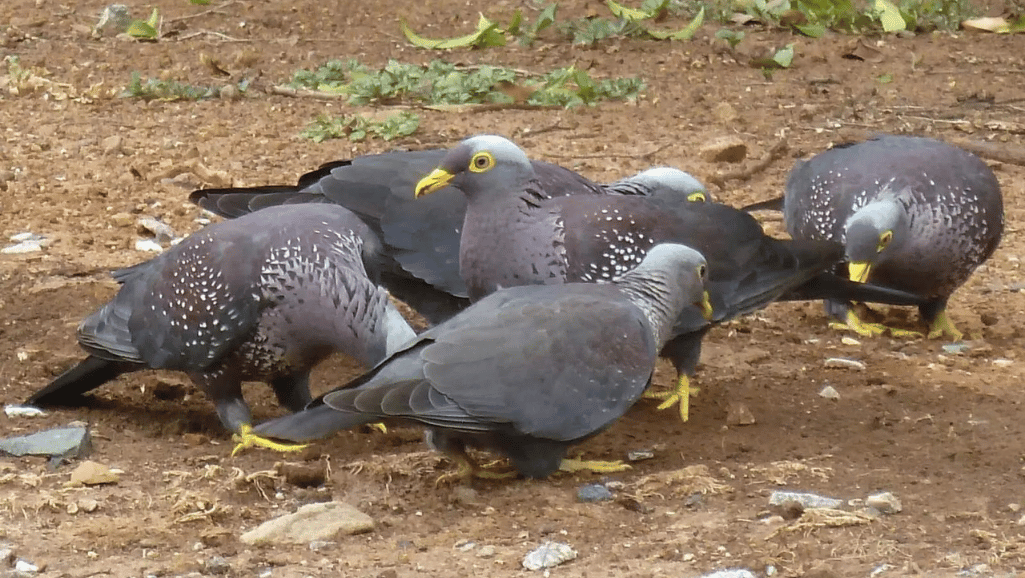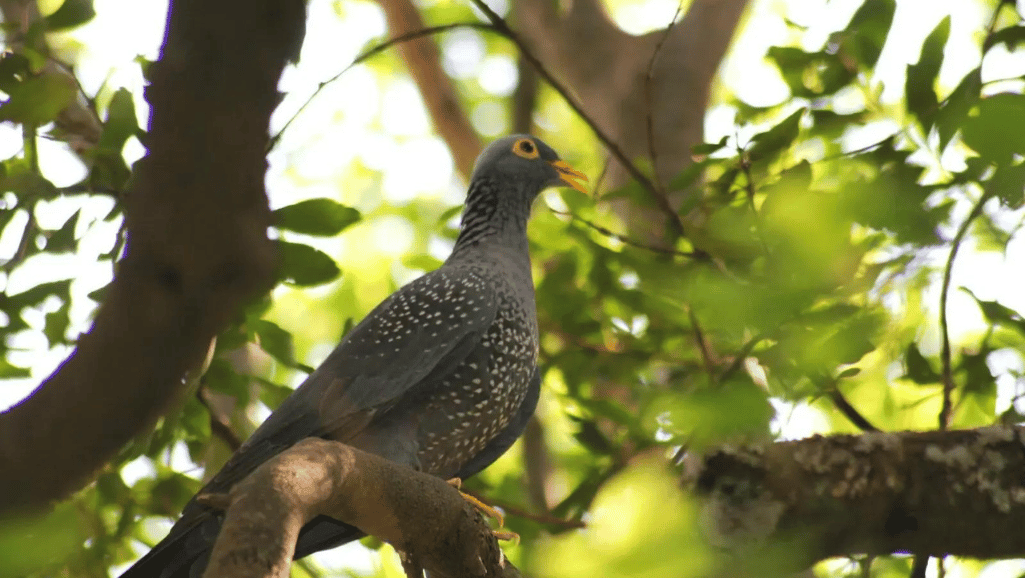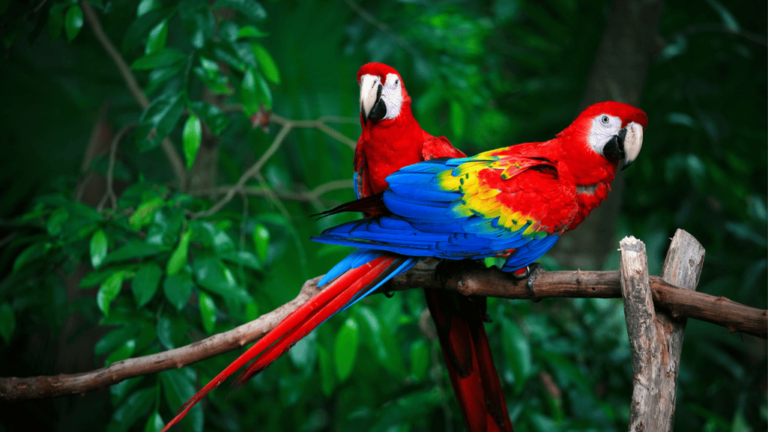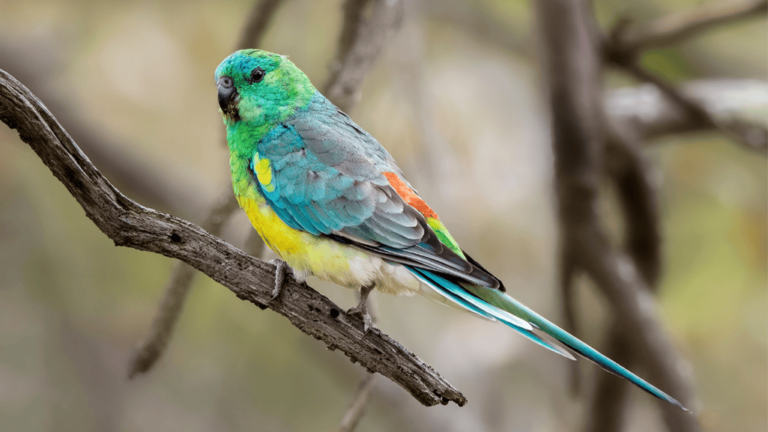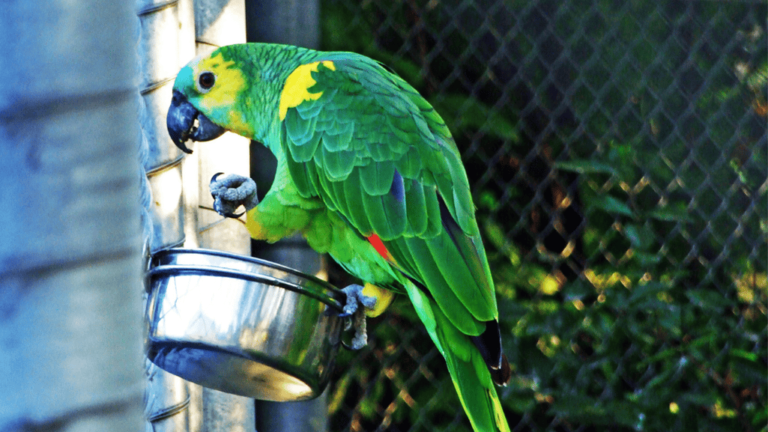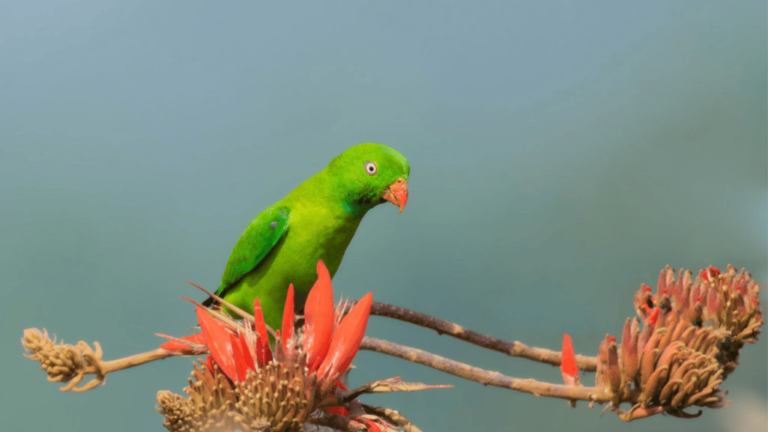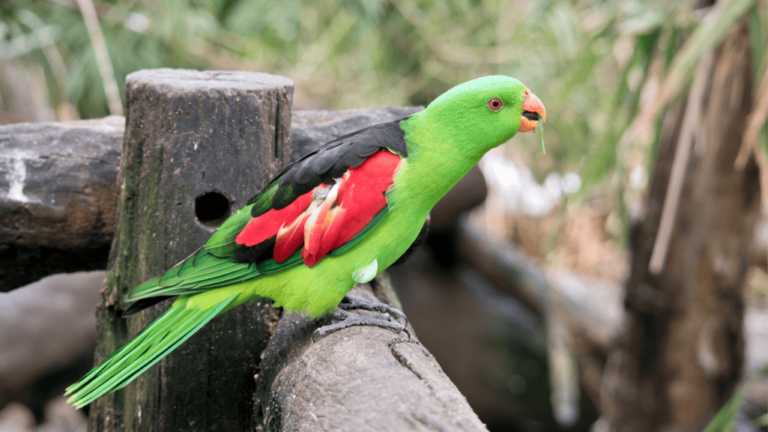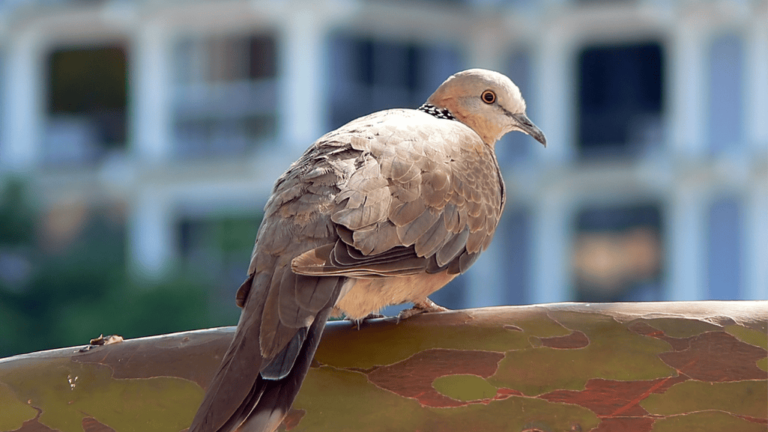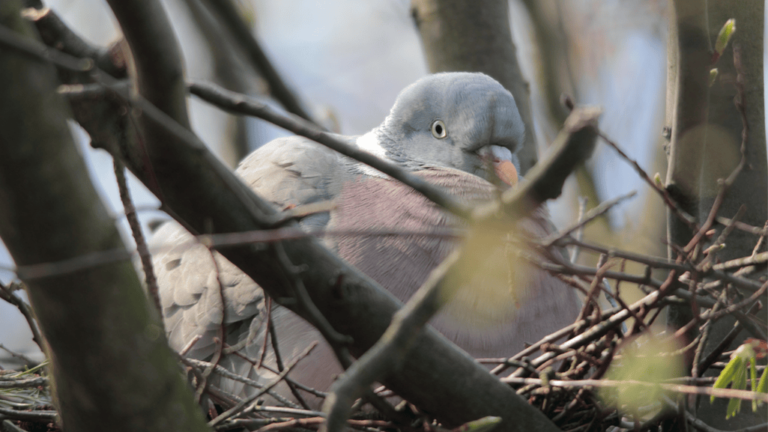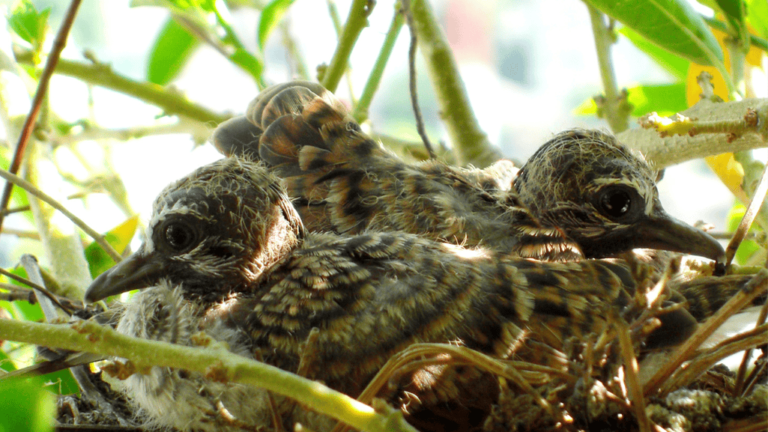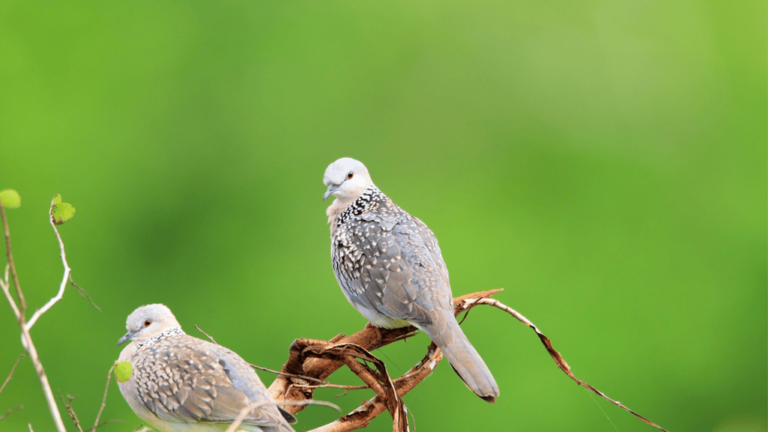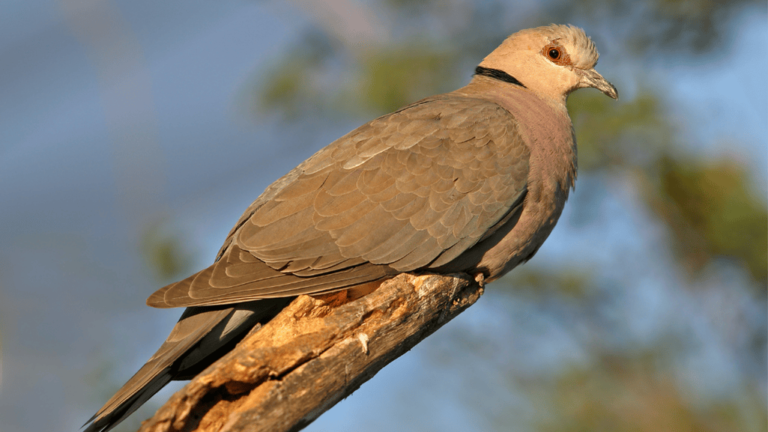The Olive-backed Pigeon, also known as the Rameron Pigeon or African Olive-Pigeon, is a stunning bird. It is a key part of the wild and important to nature. Found in eastern, central, and southern Africa, and parts of the Arabian peninsula, it has won the hearts of bird lovers and conservationists.
This pigeon has a unique yellow bill and legs. It is the biggest pigeon in its area. Its strong muscles help it fly well, showing strength and agility. These birds live in evergreen forests and make sounds that fill the forest.
Humans and these birds live together, showing how we can share the world. They lay one egg in trees and mate for life, showing deep commitment. But, threats like losing their homes and being hunted worry about their future.
Key Takeaways
- Understanding the Olive-backed Pigeon for birdwatching and conservation efforts.
- Recognizing the importance of habitat preservation for this pigeon species.
- Appreciating the avian flight adaptations and nesting behaviors of the Olive-backed Pigeon.
- Exploring the diet and foraging behavior tied to the rich ecosystem the Olive-backed Pigeon inhabits.
- Shedding light on the steady relationship between Olive-backed Pigeons and the role of geophagy in their nutrition.
Introduction to the Olive-backed Pigeon
The Olive-backed Pigeon is a star in ornithology for its stunning colors and behaviors. It’s a key species in studying how birds adapt and survive. This pigeon is known for its bright purplish-brown color and speckled patterns that seem to shine.
Its yellow legs and bill make it stand out. These features help people tell it apart in the wild. The pigeon’s unique cooing sound is as memorable as its look. It uses this sound to talk to other pigeons and delights humans who hear it.
These pigeons live mainly in southern Africa’s forests. They love to eat small fruits from tall trees, showing how well they adapt. They are careful and avoid predators like hawks and humans, thanks to their smart survival skills.
Their life is full of interesting behaviors that show their evolution for survival and making more pigeons. The Olive-backed Pigeon always amazes us with its mix of beauty and survival skills.
Physical Characteristics of the Olive-backed Pigeon
The Olive-backed Pigeon is a strong and beautiful bird. It has key physical traits that help identify it and understand its survival skills. People admire these pigeons for their looks and study them for their amazing survival tricks.
Size and Weight Variation
Men and women Olive-backed Pigeons differ in size and weight. Men are usually bigger, reaching 40 cm long and weighing about 460 grams. Women are a bit smaller, weighing around 415 grams. This size difference helps identify them in the wild. They have strong muscles, making up 44% of their weight, which helps them fly well.
Distinctive Plumage and Markings
The Olive-backed Pigeon’s feathers are not just pretty; they help it blend in with its surroundings. It has a purple-brown plumage that shines in the right light. Its bright yellow legs and bill stand out against its dark body, making it easy to spot.
Adaptations for Flight: Musculature and Wingbeats
The pigeon’s flight adaptations are quite interesting. Its muscles help it fly fast and maneuver through trees. This lets it move quickly when looking for food or avoiding danger. Its flying skills show how well it has adapted to different environments.
Learning about these traits helps us understand the pigeon’s role in nature and how it has evolved. For more info on other birds and their survival strategies, check out this article on the Blue-winged Macaw. It talks about the challenges these birds face in their habitats.
Habitat Preferences and Distribution
The Olive-backed Pigeon is known for its wide range in eastern and southern Africa. It lives in cool, moist forests, mostly above 1,400 meters high. Sometimes, it goes as low as 700 meters in certain places.
This pigeon can live in many places, like forests by rivers and in mountains. It also likes gardens and plantations with fruit trees. These places give it food and places to nest. This helps the Olive-backed Pigeon spread from Ethiopia to southern Africa and parts of the Arabian peninsula.
| Region | Altitude Range (meters) | Notable Habitats |
|---|---|---|
| Eastern Africa | 1,400 – 2,000 | Moist Forest Canopies |
| Southern Africa | 700 – 1,500 | Riverine Forests, Gardens |
| Arabian Peninsula | 800 – 1,400 | Mountainous Regions, Plantations |
The Olive-backed Pigeon likes to nest in high, hidden spots in trees. This helps keep their nests safe and private. Their choice of home shows how important they are in their ecosystem. This makes them key to studying and protecting wildlife.
People find the Olive-backed Pigeon fascinating because of its adaptability and wide range. It’s a favorite among bird lovers and those who work to protect wildlife.
Olive-backed Pigeon’s Diet and Foraging Behavior
The Olive-backed Pigeon has unique eating habits and foraging behavior. They mainly eat fruits and small berries from the canopy of forests. These birds move through the forest canopy with skill, avoiding predators and finding plenty of food.
Preference for Fruits and Small Berries
Fruits and berries are key to the Olive-backed Pigeon’s diet. This choice helps them get the nutrients they need for health and breeding. Their diet supports their physical needs and gives them the energy for long flights across their range.
Feeding Strategies in the Canopy
The Olive-backed Pigeon can reach food in the dense canopy with ease. They stay high up, away from ground predators. This way, they stay safe while eating.
Geophagy: Consuming Earth for Nutrients
These pigeons also eat earth or clay, a behavior called geophagy. This adds minerals and nutrients to their diet of fruits. It helps with digestion and reduces the risk of eating toxic berries.
To learn more about birds like the Olive-backed Pigeon and the Blue Naped Parrot, check out this bird resource.
| Behavior | Function | Result |
|---|---|---|
| Consumption of fruits and berries | Intake of essential vitamins | Energy for daily activities and flight |
| Canopy feeding strategies | Protection from predators | Increased survival rate |
| Geophagy | Supplement diet with minerals | Better digestion and detoxification |
The Olive-backed Pigeon’s smart ways of eating and foraging show how adaptable and smart they are. Their eating habits and how they use their habitat give us a peek into how ecosystems work and the balance within them.
Nesting and Breeding Patterns
The Olive-backed Pigeon has unique nesting and breeding habits. They build their nests high up in trees using sticks and twigs. This keeps them safe and controls the temperature.
From summer to autumn, these pigeons may have several broods. The male gathers materials, and the female builds the nest. This teamwork shows their strong bond, which lasts forever. Both parents take turns incubating and protecting the single egg.
- Location: High tree canopies in moist forests
- Nesting Material: Sticks and twigs collected by the male
- Brood Frequency: Multiple broods from summer to autumn
- Egg Count: Usually one egg per clutch
- Parental Care: Both parents share incubating and rearing duties
Knowing how these pigeons nest and breed helps with conservation. Their homes are being destroyed, so we must protect their environment. Learn more about helping other birds here.
| Aspect | Detail |
|---|---|
| Breeding Season | Summer to Autumn |
| Typical Clutch Size | One egg |
| Incubation Period | Both parents participate |
| Nesting Height | Varies, typically high in tree canopies |
“Olive-backed Pigeon”: Understanding the Name
The Olive-backed Pigeon, once known as the Rameron Pigeon, has a name that mixes history and biology. It’s also called the African Olive-Pigeon in many places and the Geelbekbosduif in Afrikaans. This name doesn’t really match its feathers but rather its love for olives and small fruits.
Looking into the naming of birds like the Olive-backed Pigeon tells us about ornithology’s history and the traits that get names. This bird, in the Columbidae family with about 350 species, gets its name from its typical or unique features in different areas.
Learning how this bird got its name is interesting. Check out the detailed study on forest-loving African Olive-Pigeons. It shows why these names are important, both culturally and for understanding their environment.
| Feature | Description |
|---|---|
| Conservation Status | Least Concern (IUCN 3.1) |
| Adult Size | 37 to 42 cm in length, 300 to 450 g in weight |
| Diet | Fruit, berries, and occasionally insects and caterpillars |
| Habitat Preference | Cool, moist forest canopies above 1,400 m altitude |
| Incubation Period | 17–20 days |
| Nesting Height | Up to 15 m high in trees |
The Olive-backed Pigeon is part of the columbidae family, found in many places from rainforests to deserts. Its unique diet and habitat show why specific names are crucial. They help researchers and bird lovers understand the species’ habits and where it lives.
Conservation Status and Threats
The Olive-backed Pigeon is facing serious threats that could affect its survival. Habitat loss and hunting are the main concerns. It’s important to understand these threats to help protect this unique bird.
Impact of Habitat Loss and Fragmentation
Deforestation and land use changes are causing a big problem for the Olive-backed Pigeon. Their homes are being destroyed and broken into smaller pieces. This means they have less space and poor living conditions. They now live in just about 299 km2 of good habitat, making their situation very tough.
Hunting Pressure and Its Effects on Population
Hunting is also a big issue for these birds. They are hunted for fun and to eat, especially in easy-to-reach forests. This has greatly reduced their numbers and makes it hard for them to recover. We need to act fast to save them.
| Conservation Status | Population Size | Hunting Impact |
|---|---|---|
| Endangered | Estimated at 3,893 – 5,497 individuals | Significant decline due to hunting |
| Habitat Range | Protected Actions | Proposed Measures |
| Approximately 299 km2 | Protection in São Tomé Obo Natural Park, hunting restrictions | Monitor hunting, research habitat needs, enhance law enforcement |
We need to work together to save the Olive-backed Pigeon. We must focus on conservation, monitoring, and teaching people about these birds. It’s crucial to have strong laws to protect their homes and limit hunting.
Behaviors and Social Structure
The Olive-backed Pigeon shows complex behaviors in mating, social structure, and group dynamics. These behaviors help us understand their social life and their place in nature.
Mating for Life: Bonding and Pair Dynamics
These pigeons are monogamous, staying with one partner for life. They bond through mutual cooing, which strengthens their relationship. This long-term partnership helps them raise their young and protect their territory.
Rearing the Young: Shared Parental Duties
Both parents take on their duties seriously, from incubating eggs to feeding the chicks. This teamwork ensures many of their babies survive. It shows how these pigeons have adapted to their environment.
From Solitary to Social: Group Dynamics Across Seasons
Usually alone, these pigeons sometimes come together in large groups during certain seasons. These groups help protect them from predators and find food. This shows how they adjust to their surroundings.
Looking at how urban pigeons behave gives us more insight into their adaptability. Research on urban pigeons shows how the environment affects their behavior. Similar behaviors are seen in birds like the Red Crowned Parakeet, as explained in an article.
Conclusion
The Olive-backed Pigeon connects the past and present of birds, showing how they’ve always been important to humans. Through history, we see how birds like doves and pigeons have been part of our lives. They were food and symbols in ancient times, from the First Temple to the Roman era.
Now, we face a big challenge with many pigeon species at risk of disappearing. The Scaled Pigeon, one of 344 in the Columbidae family, shows us how diverse and unique these birds are. They have special ways of living and breeding. Research helps protect them and teaches us about their biology, like how they make “crop milk” for their babies.
We aim to keep the Olive-backed Pigeon and others like it safe. Researchers, environmentalists, and bird lovers are working together. By learning about their diets, homes, and social lives, we can help protect them. As the Scaled Pigeon thrives in different places, we must keep working to save these amazing birds.



